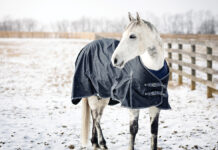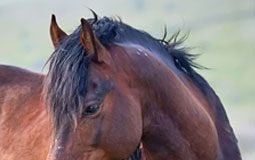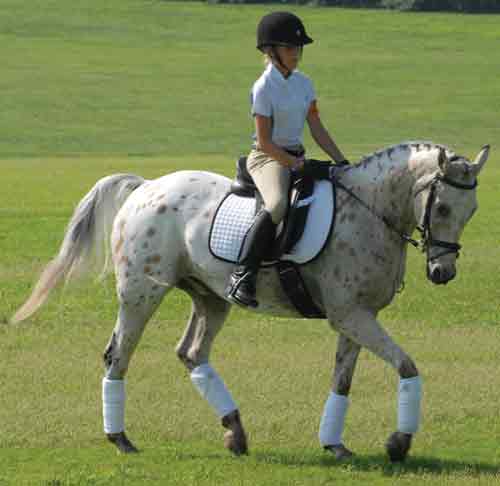
Horses and ponies come in many different breeds, colors, and white markings. This is what makes such a wonderful variety, with something for everyone to love. Color and pattern are determined by the genes passed down to a horse by its sire and dam. Certain breeds of horse only come in certain colors and have limited markings, which you can find out more about from the breed registry.
Basic Coat Colors
Bay: Reddish-brown in color with black mane and tail, legs, and ear tips (called “points”).
Black: Black haircoat with no lighter-colored points.
Brown: Brown or black haircoat, but with brown points on ears, muz- zle, and legs.
Buckskin: Tan or gold-colored coat with black points on mane, tail, legs and muzzle.
Chestnut or Sorrel: Red or reddish-brown coat. Sorrel horses usually have black points on mane, tail, muzzle, ears and lower legs.
Gray: Progressive silvering of colored hairs from dark to white.
Palomino: Pale golden or tan color, always with white or cream mane and tail.
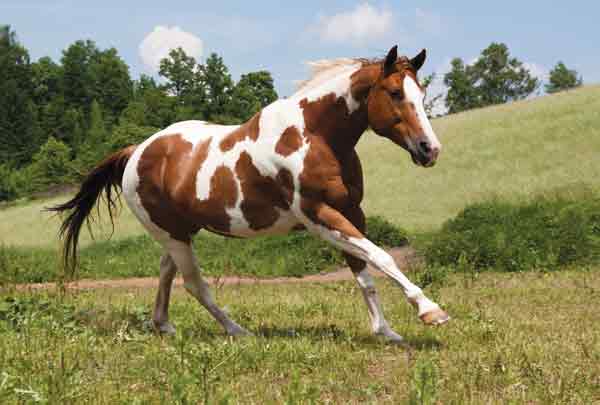
Pinto: Large patches of white and any other color. A pinto of Quarter Horse or Thoroughbred lineage can be registered with the American Paint Horse Association (and called a “Paint” for short).
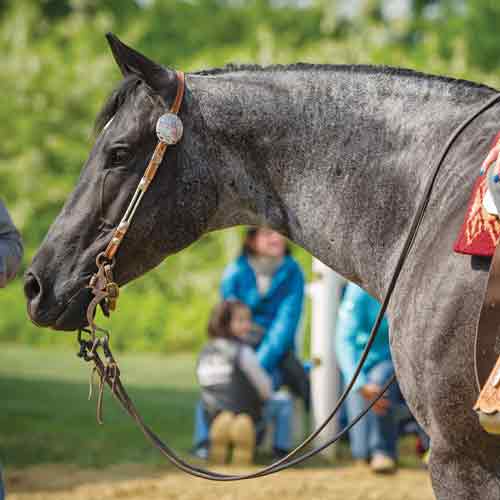
Roan: A mixture of white and pigmented hairs on a solid-color coat that don’t “gray out” as the horse ages.
Basic White Markings on the Face
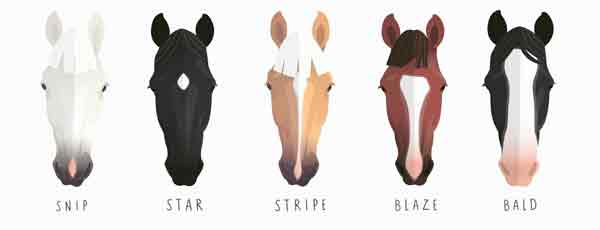
Star: White spot on the forehead, usually either right between the eyes or just above or below. Can be centered or off-center. Size isn’t measured unless the star starts to turn into a stripe.
Stripe: Narrow white stripe down the center of the face on the bridge of the nose.
Blaze: Wide white area that runs along the bridge of the nose.
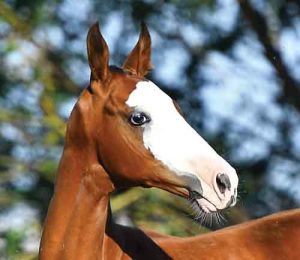
Bald Face: White hair that starts above the forehead and goes all the way to the muzzle, extending beyond the bridge of the nose to the side of the face, and sometimes going over the eyes as well.
Snip: White spot on the muzzle, between or just below the nostrils.
Basic White Markings on Horse Legs
Coronet: A small white band just above the hoof.
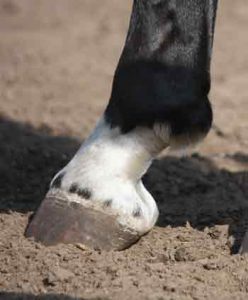
Half-Pastern: A white marking that extends from the edge of the hoof to halfway up the pastern.
Sock: A white marking that extends from the edge of the hoof to just over the ankle.
Half-Cannon: A white marking that extends from the edge of the hoof to halfway to the knee or hock.
Stocking: A white marking that extends from the edge of the hoof all the way to the knee or hock.
 For practice, look at as many horses as you can and identify their colors and markings. In time, you’ll be a pro and able to point them out in no time!
For practice, look at as many horses as you can and identify their colors and markings. In time, you’ll be a pro and able to point them out in no time!
Brought to you in Partnership with the United States Pony Clubs
Find this lesson in the USPC Manual of Horsemanship Basics for Beginners D-Level (2nd edition), pages 245-248. For more fun lessons like this, join Pony Club! www.ponyclub.org
This article about horse colors and markings originally appeared in the November/December 2019 issue of Young Rider magazine. Click here to subscribe!



